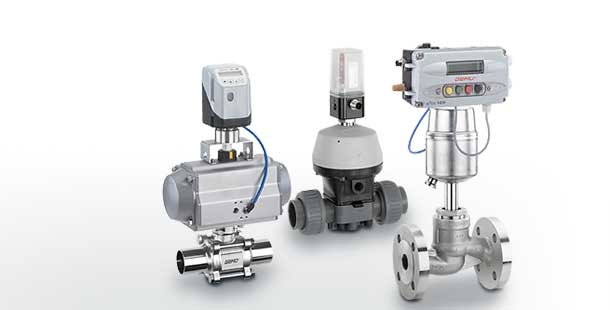
Maximize Energy Savings and Comfort With Advanced Structure Automation Controls
In the world of contemporary design and center administration, the combination of sophisticated building automation regulates stands as an essential improvement. The convergence of technology and sustainability has actually birthed a brand-new period where power effectiveness, comfort optimization, and functional streamlining are no much longer obtainable truths but far-off ambitions. By taking advantage of the power of automation, buildings can adjust, respond, and develop in manner ins which were once unbelievable. The capacity for considerable power financial savings and boosted convenience is not just an opportunity however an assurance waiting to be met. This standard change in building administration holds the vital to opening a world where ecological conscientiousness and resident health harmoniously exist side-by-side within the walls of our frameworks.
Power Performance Advantages
Energy performance benefits can substantially minimize energy consumption and functional prices in buildings. Energy-efficient systems, such as sophisticated building automation controls, can maximize the use of sources like lighting, cooling, and home heating, leading to lower power expenditures over time.
In addition, improved energy performance can extend the life expectancy of building devices and systems. By operating extra effectively, cooling and heating systems, lighting fixture, and other structure elements experience much less deterioration, resulting in reduced upkeep and replacement prices. Additionally, energy-efficient structures usually command higher residential property values and rental prices, providing lasting monetary advantages to owners.
In addition, energy efficiency can boost occupant convenience and productivity. Effectively controlled interior environments with ideal illumination and thermal conditions produce an even more conducive and pleasurable workspace, resulting in boosted employee complete satisfaction and efficiency. On the whole, the power effectiveness advantages related to sophisticated structure automation controls are multifaceted, incorporating cost savings, environmental stewardship, and owner well-being.
Boosted Convenience Control
Enhancing convenience control in building settings needs an advanced combination of sophisticated automation systems for optimal owner wellness. By making use of innovative building automation controls, centers can tailor the interior setting to fulfill the particular needs and choices of owners. control valves.
By including these advanced controls, buildings can not only improve comfort yet also improve energy efficiency by enhancing system procedures based on real occupancy and usage patterns. Inevitably, prioritizing resident convenience via sophisticated automation systems leads to an extra pleasurable and much healthier interior setting.
Operational Performance Improvements
Moreover, the implementation of real-time surveillance and analytics tools enables structure drivers to determine energy inefficiencies and functional anomalies immediately. By continually checking energy use patterns and system performance metrics, changes can be made in real-time to enhance energy usage and ensure peak operational effectiveness. control valves. Additionally, including demand action approaches into structure automation controls can even more boost operational performance by dynamically adjusting power usage based upon grid problems and prices signals
Indoor Environment Optimization
Efficient interior environment optimization is an essential facet of building automation controls, ensuring owners' comfort and wellness while optimizing power savings. By using advanced sensors and controls, developing automation systems can constantly change and check temperature level, moisture degrees, air top Home Page quality, and air flow to develop an optimal interior environment. Maintaining constant and comfy problems not only improves owner complete satisfaction yet also increases efficiency and general wellness.
Interior climate optimization also plays a vital duty in power effectiveness. By fine-tuning air flow, home heating, and cooling systems based upon real-time information and tenancy patterns, constructing automation controls can dramatically reduce power usage - control valves. As an example, carrying out techniques such as demand-controlled ventilation and thermal zoning can help minimize power waste while making certain that each area of the building receives the essential conditioning.

Lasting Environment Development
Building automation regulates not only optimize interior environment problems for energy performance and resident convenience however also lay the structure for developing a sustainable setting with calculated management click now of sources and systems. By incorporating innovative structure automation innovations, such as sensing units, actuators, and intelligent software program, facilities can keep an eye on and change power use in real-time to decrease waste and minimize their carbon impact. These systems allow anticipating maintenance, determining prospective concerns before they intensify and maximizing equipment performance to boost longevity and effectiveness.
Moreover, sustainable atmosphere production extends beyond energy monitoring to encompass water conservation, waste decrease, and interior air quality enhancement. Structure automation controls can control water use, find leakages, and ensure appropriate waste disposal methods, adding to total sustainability efforts. Additionally, by managing and keeping an eye on air flow and filtering systems, these modern technologies boost owner health and productivity while decreasing energy consumption related to heating and cooling operations.
Conclusion
To conclude, advanced structure automation manages offer substantial advantages in terms of power financial savings, comfort control, operational efficiency, interior environment optimization, and developing a lasting atmosphere. By executing these controls, buildings can achieve from this source optimum efficiency while decreasing energy consumption and boosting passenger comfort. It appears that making use of innovative automation innovation is important in enhancing structure performance and creating a more sustainable future.
Power effectiveness benefits can substantially minimize energy intake and operational costs in structures. Overall, the power effectiveness benefits connected with advanced building automation controls are multifaceted, incorporating cost financial savings, environmental stewardship, and owner well-being.
Furthermore, including need response methods right into structure automation controls can further enhance operational performance by dynamically adjusting energy usage based on grid conditions and prices signals.
Building automation controls not only optimize indoor climate conditions for energy performance and occupant convenience but also lay the structure for developing a lasting setting via strategic monitoring of systems and sources.In verdict, progressed structure automation manages offer significant benefits in terms of power financial savings, convenience control, functional performance, interior environment optimization, and developing a lasting atmosphere.